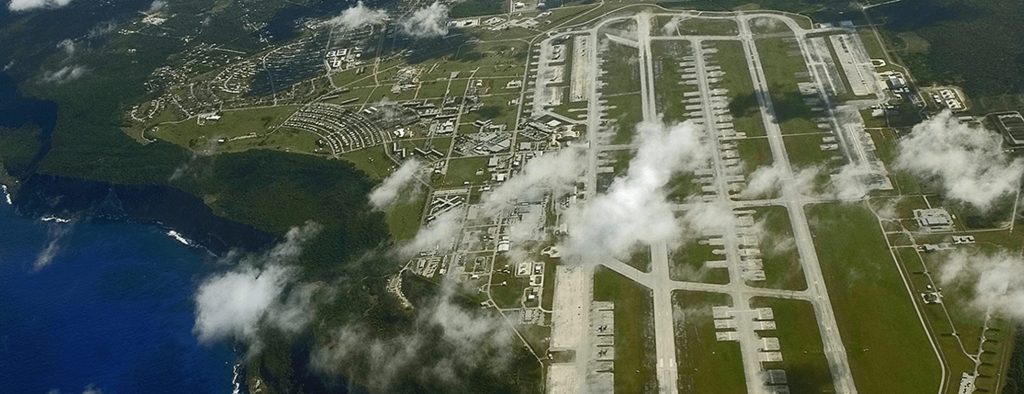
Beale AFB, northern California
There I was going into the squadron for a night training flight in a B52 G Model. I had completed 12 months of pilot training, 3 ½ months of B52 school and sundry other USAF required schools/training. I was in month 1 of my required 4 months of local check out before full certification as a co-pilot of the B52G model. Upon arrival at the squadron for mission preflight, I was immediately approached by the squadron operations officer who said “Lt., pack your bags you are leaving for TDY Guam in 72 hours as a co-pilot for Crew R-12”. Of course, I saluted and replied, “Yes, sir”.
Journey to Guam
72 hours later, I met Crew R-12 for the first time (pilot, radar navigator, navigator, Electronic Warfare Officer, tail gunner).
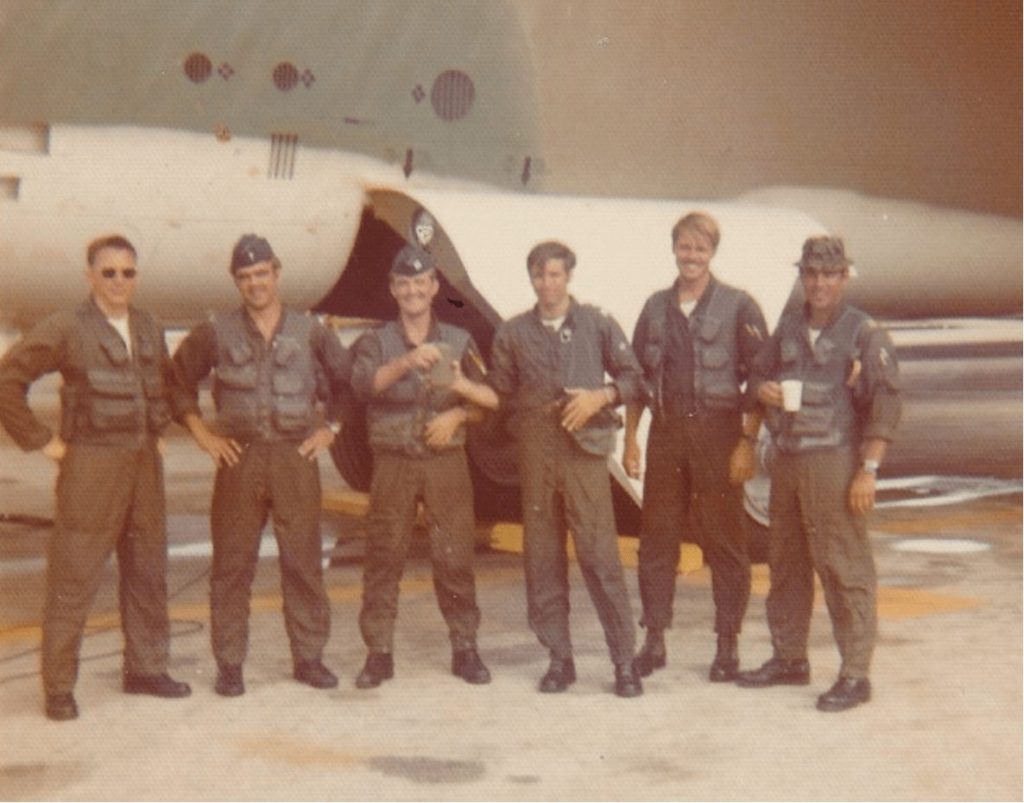
We constituted a 3-aircraft cell assigned to ferry 3 B52Gs to Guam and remain there to conduct combat missions as directed by 8th Air Force. Our B52 had a maintenance malfunction and was 4 hours late departing. The other 2 aircraft left on schedule and we would fly as a lone aircraft. Immediately after departure, we conducted aerial refueling from a KC135 just outside San Francisco over the Pacific. It was my first solo, co-pilot aerial refueling. Aerial refueling is generally regarded as one of the most difficult/dangerous tasks in military flying. There are two large aircraft about 75 ft from each other (B52 and KC135 – Boeing 707)) connected by a long metal tube (boom) which pumps jet fuel from the KC135 to the B52 under high-speed pressure. The danger of a midair collision is omnipresent. The pilots of both aircraft must fly by hand as autopilot flying was not an option. 17 ½ hours non-stop later, we could see Guam (about 30 miles long and 12 miles wide) on the distant horizon. Now, I understood what Naval aviators must feel like when they spot their aircraft carriers! The runway at Anderson AFB, (our destination) was a little over 2 miles of the island’s 30 miles.
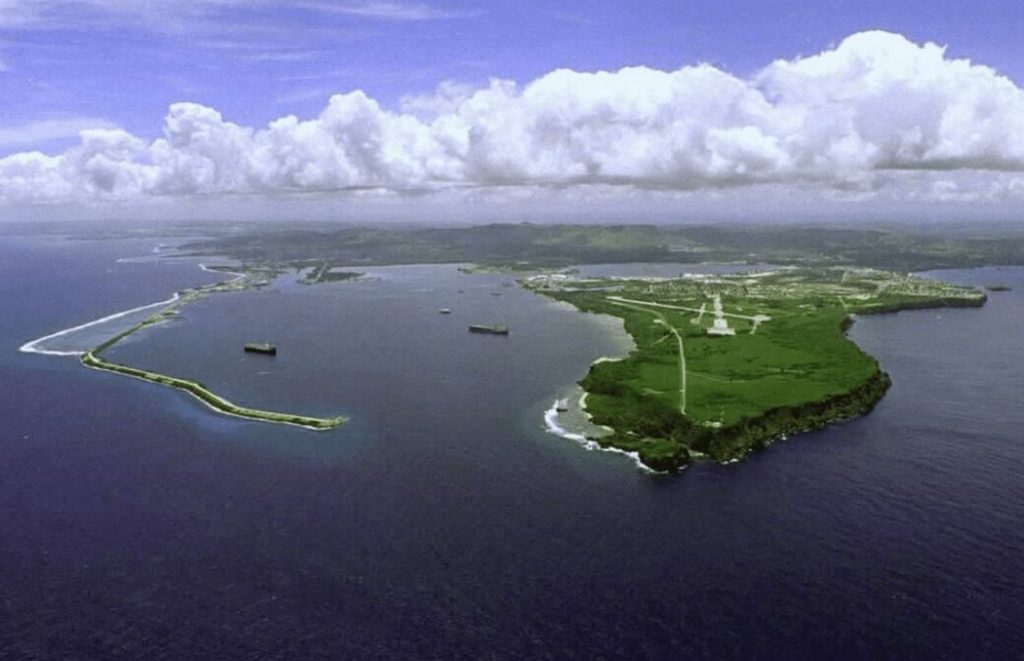
Guam
After arrival in Guam, we had about 7 days before our first mission. For the first mission only were we accompanied by an experienced combat pilot. The rest of the missions only included our crew. The average mission was about 10-11 hours, non-stop, depending on what part of Viet Nam was our target. We normally flew in 3 aircraft cells. KC-135s were strategically placed along the 5000-mile round trip route in case we needed any additional fuel. Creature comforts on the aircraft were pretty much non-existent. Our seats were thin foam on top of a survival kit mounted on an ejection seat. Therefore, we had to wear helmets, oxygen masks, parachute harness, etc. Ejection seats were triggered by an explosive charge which literally blew the seat out of a hatch in the top of the aircraft (the top hatch was triggered to blow a few milliseconds before the seat ejected through it). The seat traveled at close to 30Gs (30 times gravity) therefore almost assuring some form of spine injury. When on the ground the explosive charge was protected by a safety pin. The seat safety pin was removed prior to takeoff and replaced after landing. Heaters, air conditioners and coffee pots were low maintenance priorities so almost never worked. These were the Arc Light designated missions in support of ground troops. (Operation Arc Light was the code name for the B52 participation in the Vietnam war. Operation Arc Light ran from 1965 to 1973). The missions were mostly in South Vietnam, but I think we occasionally drifted into Cambodia and North Vietnam. Not sure if we had any missions in Laos. I completed 28 Arc Light Missions.
Most South Vietnam missions were uneventful but occasionally we would pick up a MIG searching for a target or very rarely a radar ping by a SAM (surface to air missile). The EW (Electronic Warfare Officer-managed all electronic defensive systems for the aircraft) would commence radar jamming defensive measures which were effective. The SAMs and the MIGs were all Russian.
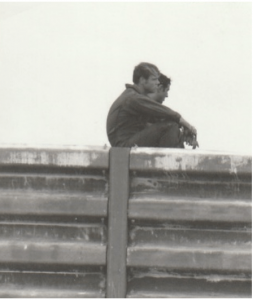
The most difficult B52 missions came right before war end during the Paris peace talks. Kissinger used the B52s based in Guam and U-Tapao, Thailand as serious negotiation tools/threats. I was in Guam on my 2nd TDY as an Air Staff Officer for 8th Air Force, so was able to see the big picture from an operations view. As the Paris negotiations ebbed and flowed, we were required to launch a maximum surge (all available aircraft) to target Hanoi. These were the Linebacker II missions. (Operation Linebacker II was the code name for the massive 11 day bombing campaign conducted primarily by B52s over Hanoi in support of the Paris peace talks). A number of B52s were shot down over Hanoi by SAMs (using effective Russian radar and MIG positioning). We launched about 4 maximum surges. After peace was concluded in Paris, it took about 6 months to wind down the B52 operation in Guam and in Thailand.
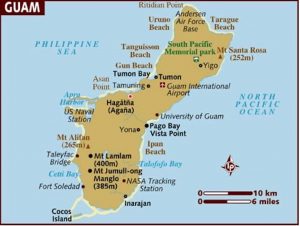
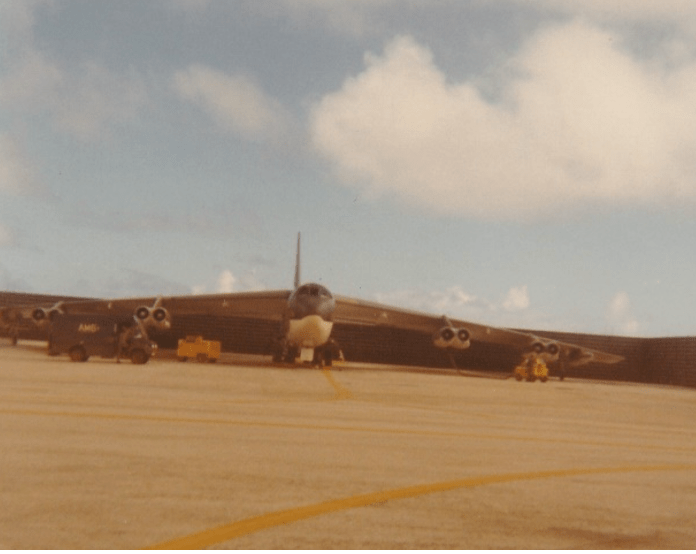
Is this Scott Nix who graduated from high school in Biloxi, MS?
My father, Paul Greer, was stationed at that base around 1971, give or take a few years. He was a mechanic. I am looking forward to reading your article (above) you wrote to give me some perspective. He passed away in 2019. I didn’t know much about his times there, but I was born at the Naval Base in 1971. Thank you for your service.
This Memorial Day, I’m remembering a B52 crew , stationed at Beale AFB, shot down over Vietnam in 1973. I believe the pilot in command perished.
Thankyou for sharing your article. It gave me some insight into missions my dad flew in B52 ‘s when stationed at Utapao 1971-1972. He was stationed at Beale AFB 1972-1976
Is your dad still alive.. I know it’s a long shot but trying to find my father who flew a B52 was a colonel stationed in Anderson Air Force base Guam in late 60s early 70s, Paul Perkins
The photo of the runway with the caption “Looks Like An Aircraft Carrier” is the abandoned NAS field next to Apra Harbor.
Thank you for your service.
My dad was the Communications Superintendent for Tactical Air Frequencies during Arc Light. He would have been the guy assigning call signs, frequencies to use, etc. and may have sat in on some of your mission debriefs. We were there 61-63 and 65-72.
I’m looking for a person stationed there in the kate60 early 70s pilot colonel,paul perkins
Is the author of this article Scotty Nix? If so – flash from the past. We are the only two copilots out of a group of 5 that weren’t killed in a crash or shot down.
Don B BEA R-11 copilot.
Thanks for the story. I had heard about Linebacker I and II from a Marine friend who flew jets in them. Your perspective fleshes them out a bit. I am gratified to see that The Days Forward is getting so many views and comments from people who are not BOTL. Stories like yours, all of ours, are worth preserving and sharing with a much wider audience.
Nice article, Scott; most informative When I was in RVN in early 1972, a B52 strike hit an area about 12 clicks (kilometers) north of my compound (not sure who had called for it) and we felt the ground shake noticeably. You guys made a lot of racket.